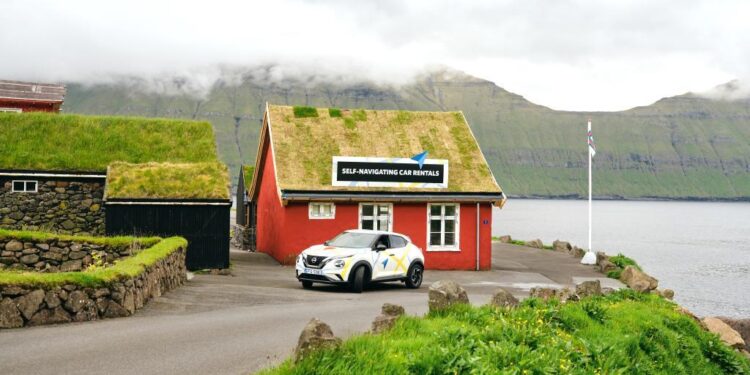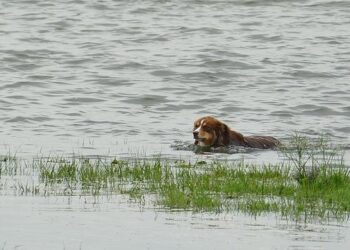The Faroe Islands have taken a bold step into the future of transportation with the launch of self-navigating cars aimed at transforming everyday travel. In an innovative move to tackle what authorities describe as “predictable experiences,” this initiative seeks to enhance safety, efficiency, and freedom on the roads. As one of the first regions to embrace autonomous vehicles on a broad scale, the Faroe Islands are positioning themselves at the forefront of automotive technology, offering a glimpse into how self-driving cars could reshape daily life in small, closely-knit communities.
Faroe Islands Introduce Autonomous Vehicles to Transform Daily Commutes
The Faroe Islands have taken an ambitious step towards redefining urban mobility by deploying fleets of cutting-edge autonomous vehicles across key commuter routes. These self-navigating cars leverage advanced AI algorithms and real-time sensor networks to offer a seamless travel experience, dramatically reducing human error and enhancing road safety. Officials emphasize that this transition isn’t just about innovation; it aims to combat the monotony of daily commutes described as “predictable experiences,” fostering a more dynamic interaction between citizens and their environment.
Key Features of the Faroe Islands Autonomous Vehicles:
- Ability to adapt routes based on real-time traffic and weather conditions
- Integrated communication with local infrastructure to optimize traffic flow
- Enhanced passenger comfort through customizable ride settings
- Emission-free operation aligning with environmental goals
| Aspect | Before Autonomous Cars | After Autonomous Cars |
|---|---|---|
| Average Commute Time | 35 minutes | 25 minutes |
| Accident Rate | 7 incidents/month | 1 incident/month |
| CO2 Emissions | High | Near Zero |
Exploring the Technology Behind Self-Navigating Cars and Their Impact on Traffic Safety
At the heart of the Faroe Islands’ initiative is a sophisticated interplay of sensors, machine learning, and real-time data processing that empowers self-navigating cars to interpret and adapt to their environment with remarkable precision. These vehicles are equipped with LiDAR scanners, radar, and high-definition cameras that create a dynamic 3D map of surroundings, allowing instant detection of obstacles, road conditions, and weather changes. Advanced AI algorithms then analyze this data to make split-second decisions, mimicking human intuition while reducing errors caused by fatigue or distraction.
The broader impact on traffic safety is expected to be significant, as these autonomous systems aim to reduce accidents stemming from human error, which accounts for over 90% of road incidents worldwide. The Faroe Islands’ project emphasizes reducing ‘predictable experiences’-routine human driving patterns that often lead to complacency or risky behavior during repetitive journeys. Key benefits include:
- Improved reaction times to unexpected hazards
- Continuous monitoring of vehicle surroundings beyond human field of vision
- Consistent adherence to traffic laws and speed limits
- Enhanced communication between vehicles to prevent collisions
| Technology Component | Function | Safety Benefit |
|---|---|---|
| LiDAR Scanners | Mapping terrain & obstacles | Accurate environment sensing in low visibility |
| AI Decision Systems | Real-time data analysis & control | Faster hazard response and reduced human error |
| Vehicle-to-Vehicle (V2V) Comms | Exchanging traffic information | Collision avoidance and smoother traffic flow |
Recommendations for Integrating Autonomous Vehicles into Small Island Communities
Small island communities, like the Faroe Islands, present unique challenges and opportunities for the integration of autonomous vehicles. Prioritizing community engagement is essential to foster public trust and ensure the technology aligns with local needs. Authorities are recommended to establish pilot zones with limited traffic complexities to gradually introduce self-driving cars while monitoring performance and gathering feedback. Additionally, environmental considerations must guide deployment, emphasizing electric autonomous fleets to protect fragile ecosystems and reduce carbon footprints.
To streamline this transition, collaborative frameworks between local governments, tech developers, and residents should be set up to co-create practical regulations and safety protocols. Incorporating local geographic data into AI navigation systems will enhance route accuracy and responsiveness to sudden coastal weather changes. The table below outlines key focus areas for successful integration:
| Focus Area | Action | Expected Benefit |
|---|---|---|
| Community Outreach | Workshops & Surveys | Build Trust & Tailored Solutions |
| Environmental Impact | Electric Fleets | Reduced Emissions & Noise |
| Regulatory Framework | Custom Local Policies | Safe & Adaptive Use |
| Technology Adaptation | Geographic AI Mapping | Improved Navigation Accuracy |
Concluding Remarks
As the Faroe Islands embark on this pioneering journey with self-navigating cars, they position themselves at the forefront of automotive innovation, addressing not only transport efficiency but also the challenge of daily monotony. While the initiative aims to transform predictable travel experiences into more engaging and autonomous ones, its success could serve as a blueprint for similar communities worldwide. Observers will be watching closely to see how this blend of technology and lifestyle reshapes mobility in the coming years.
















